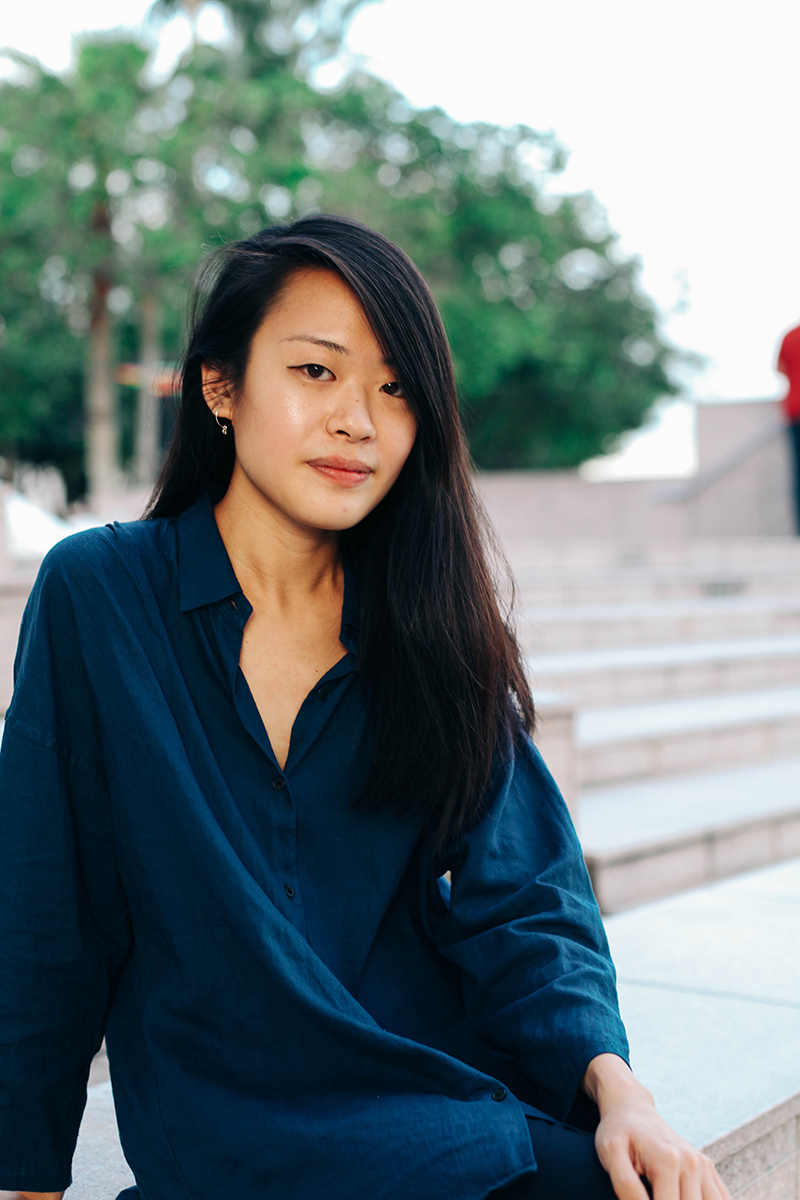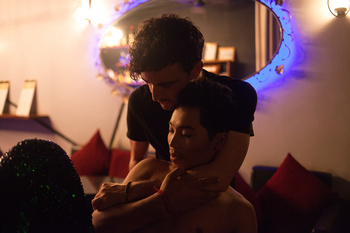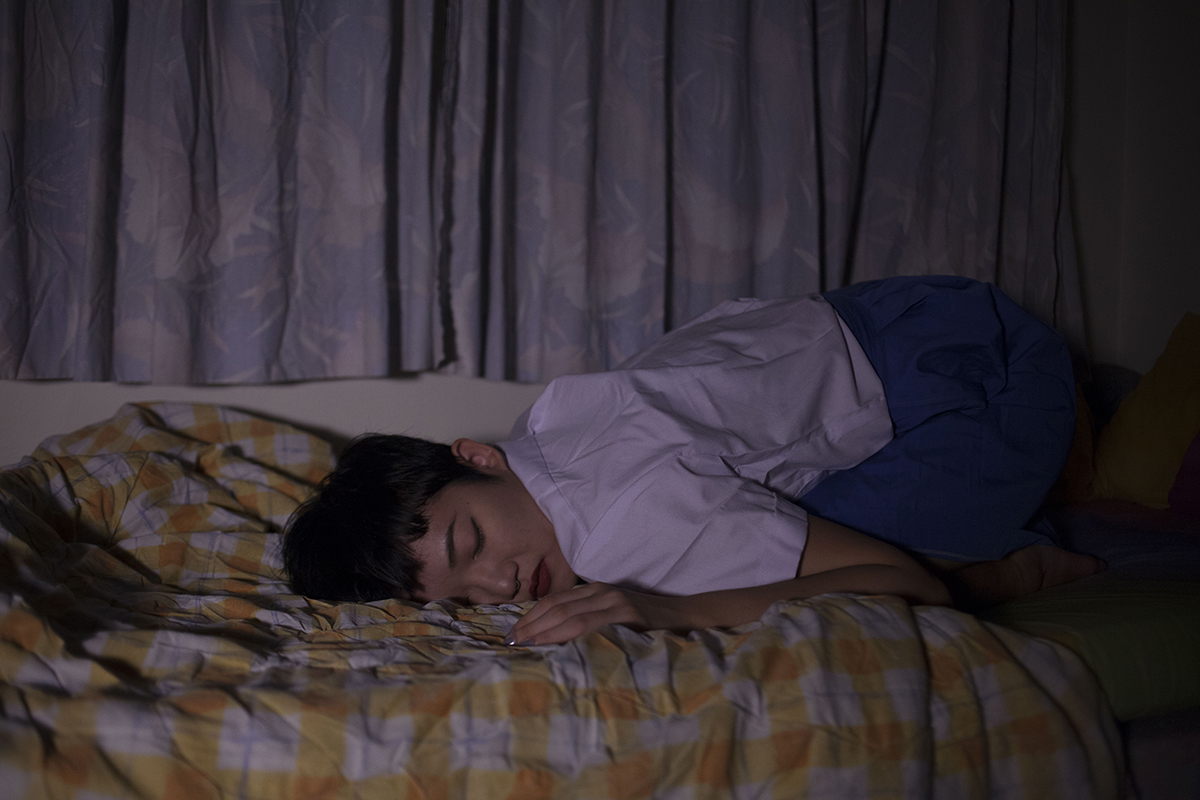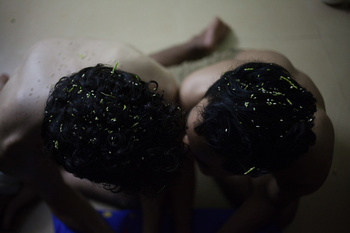A collection of conversations with a diverse range of local and regional creatives
Library Conversations for SGABF2020
We examined the systems that support art book making and independent art book publishing in Singapore and the region.
A Closer Look for SGABF2019
We gathered perspectives on our zine and art book culture, and discuss the possibilities of self-publishing today.
21 Creatives for SGABF2018
We sat down with 21 creatives of various disciplines to learn about their practice and asked each of them to fill up a blank page in a notebook.
CHARMAINE POH

Photo Credit: SGABF
SGABF: Earlier this year, you created a photo series revealing the rituals of Singapore’s working women, called All in Her Day’s Work. How powerful a medium do you think photography or art is when it comes to empowering people and bringing about changes pertaining to societal concerns/conditioning?
CHARMAINE POH (CP): To be honest, I don’t know if photography itself can change anything. I know stories help people empathise but I don’t think it’s guaranteed or only limited to one medium. The job of a storyteller is to connect different groups of people, make empathy sort of visible. It’s not really about just the medium itself.
Personally, the camera offers me a way into people’s worlds and a way of both connecting with someone and disconnecting to protect yourself. Because in the end, as an image maker, I have to step outside of the situation, to literally frame situations and understand it. Photography allows that.
Writing is different — you experience something and often you pull the experience in your mind, but then you go back and write about it. But you can't do that with photography. You act within the moment itself at that period of time and it’s something you have to be a part of. Like for documentary photography, the image cannot happen if you don’t live that life. You have to put yourself in that situation and talk to those people and make yourself part of the story; change your own life to make that image.
 Photo Credit: Charmaine Poh, Close Enough
Photo Credit: Charmaine Poh, Close Enough
CP: The approach differs from people to people. For some, especially if you know it's going to be published and a message for the public to view, then it’s very important to let them know from the start. Sometimes, you have to spend time with them for a while. You know when people are comfortable with you. Often that means you’re feeling comfortable yourself and try to give them that confidence that you can be trusted. Eventually, they do let their guard down.
There is always a need to have a certain kind of conversation. A lot of my work is quite intimate so I cannot do it without the conversations. For Room, I spent a lot of hours just sitting with them, chatting. The images you see are results of all those hours. From the moment I say “hi” to when I start shooting, the entire process matters.
 Photo Credit: Charmaine Poh, Close Enough
Photo Credit: Charmaine Poh, Close EnoughSGABF: When photographing people, what’s your approach when it comes to making sure that the process is comfortable for your subjects?
CP: The approach differs from people to people. For some, especially if you know it's going to be published and a message for the public to view, then it’s very important to let them know from the start. Sometimes, you have to spend time with them for a while. You know when people are comfortable with you. Often that means you’re feeling comfortable yourself and try to give them that confidence that you can be trusted. Eventually, they do let their guard down.
There is always a need to have a certain kind of conversation. A lot of my work is quite intimate so I cannot do it without the conversations. For Room, I spent a lot of hours just sitting with them, chatting. The images you see are results of all those hours. From the moment I say “hi” to when I start shooting, the entire process matters.

 Photo Credit: Charmaine Poh, Room
Photo Credit: Charmaine Poh, Room
SGABF: Where do you think Singapore stands in photography – in terms of quality, culture, and viability as a long-term career?
CP: It’s really great that we have a couple of institutions that integrate photography. Those have really created some kind of ecosystem and I’m really grateful for that. At the same time, being the small industry that we are, there will always be a disadvantage in terms of expecting a wider audience and financial viability. I think there should be more galleries that focus on photography. The state of affairs for documentary photographers now is kind of lacking. You don’t have an equivalent of The New York Times here where they hire freelancers to write or photograph; it doesn’t really exist here.
SGABF: How do you think initiatives like the Singapore Art Book Fair can further advance the culture of photography in Singapore not just as a career option but also as an art form?
CP: I just had a discussion with a friend about censorship and I think if we keep accepting that censorship is okay and keep telling ourselves that it’s needed because the general public does not understand and we keep divorcing ourselves from this elusive "general public", nothing else will change.
We will always be stuck in this position until we recognise that we are part of that community and we have to own up to it. We are part of the general public. As much as we seem to be avant-garde, we belong to the citizen base. So it doesn’t really make sense to separate yourself from that entity. We need to acknowledge that there are certain principles that we have to stand for and weare the ones who need to cut everything open and pave that way for the "general public".
 Photo Credit: Charmaine Poh, Close Enough
Photo Credit: Charmaine Poh, Close Enough
We are more complex than we think so why limit ourselves to absorbing information in just one way? Everything stems from this position of informing and educating, everything starts from there and it’s self-perpetuating. People did not come out from the womb to be a philosopher, an author or an art historian. It doesn’t work that way. I mean, sure there are people who have more academic inclinations but in the end, it’s still the environment. So, pushing that boundary, whatever that boundary looks like, is always a good thing.
Charmaine Poh (b.1990) is a Chinese-Singaporean artist and documentarian. Her work concerns memory, gender, youth, and solitude. Specifically, she is interested in the performance of self, and the multiple layers of identity we build. She often works with the form of narrative portraiture. Focused on issues in Asia, her work has been recognised internationally.
 Photo Credit: Charmaine Poh, Close Enough
Photo Credit: Charmaine Poh, Close EnoughWe are more complex than we think so why limit ourselves to absorbing information in just one way? Everything stems from this position of informing and educating, everything starts from there and it’s self-perpetuating. People did not come out from the womb to be a philosopher, an author or an art historian. It doesn’t work that way. I mean, sure there are people who have more academic inclinations but in the end, it’s still the environment. So, pushing that boundary, whatever that boundary looks like, is always a good thing.
Charmaine Poh (b.1990) is a Chinese-Singaporean artist and documentarian. Her work concerns memory, gender, youth, and solitude. Specifically, she is interested in the performance of self, and the multiple layers of identity we build. She often works with the form of narrative portraiture. Focused on issues in Asia, her work has been recognised internationally.
© Singapore Art Book Fair 2025. All rights reserved.
For further enquiries, please contact us at info@singaporeartbookfair.org.
Singapore Art Book Fair is organised by

For further enquiries, please contact us at info@singaporeartbookfair.org.
Singapore Art Book Fair is organised by
